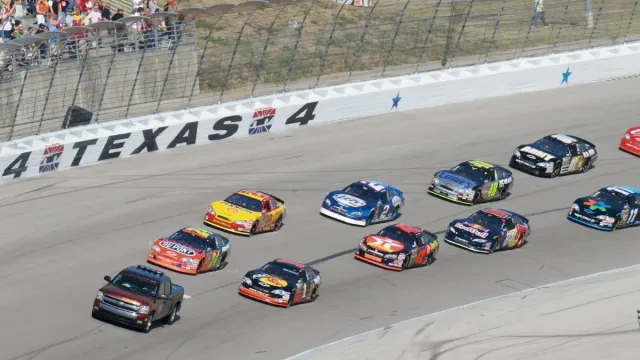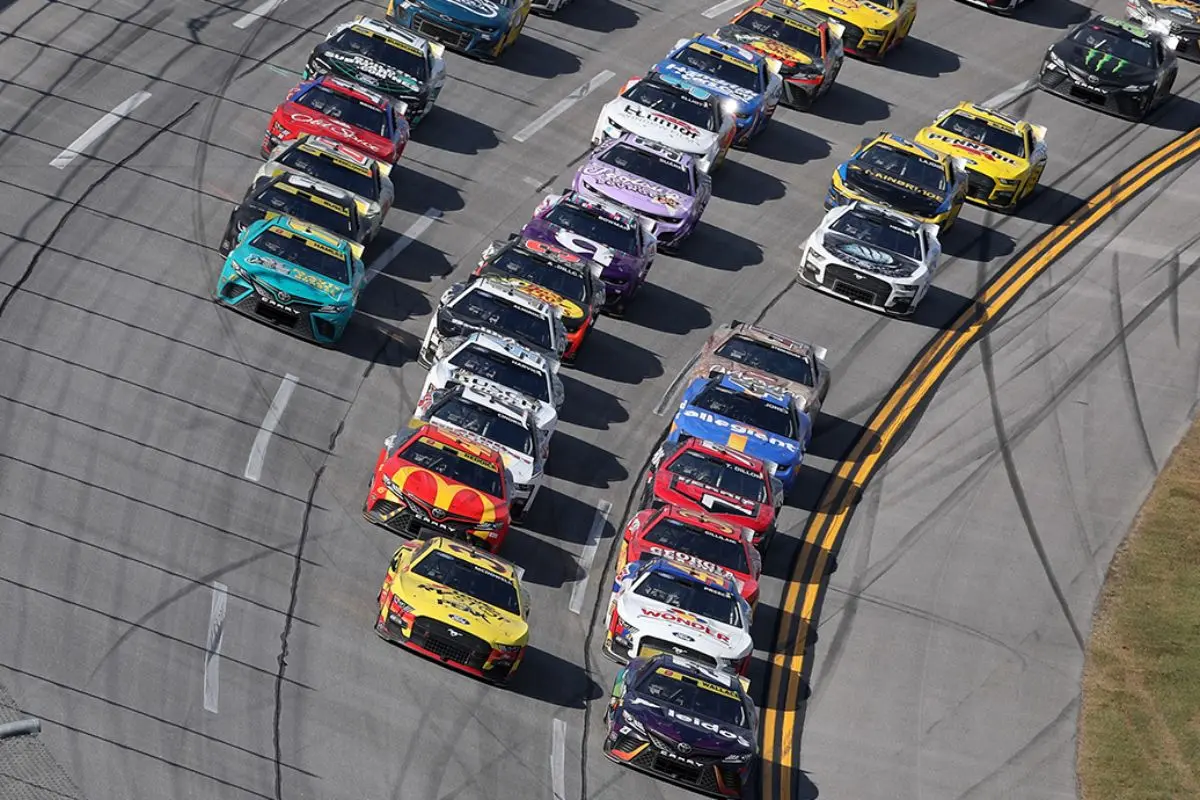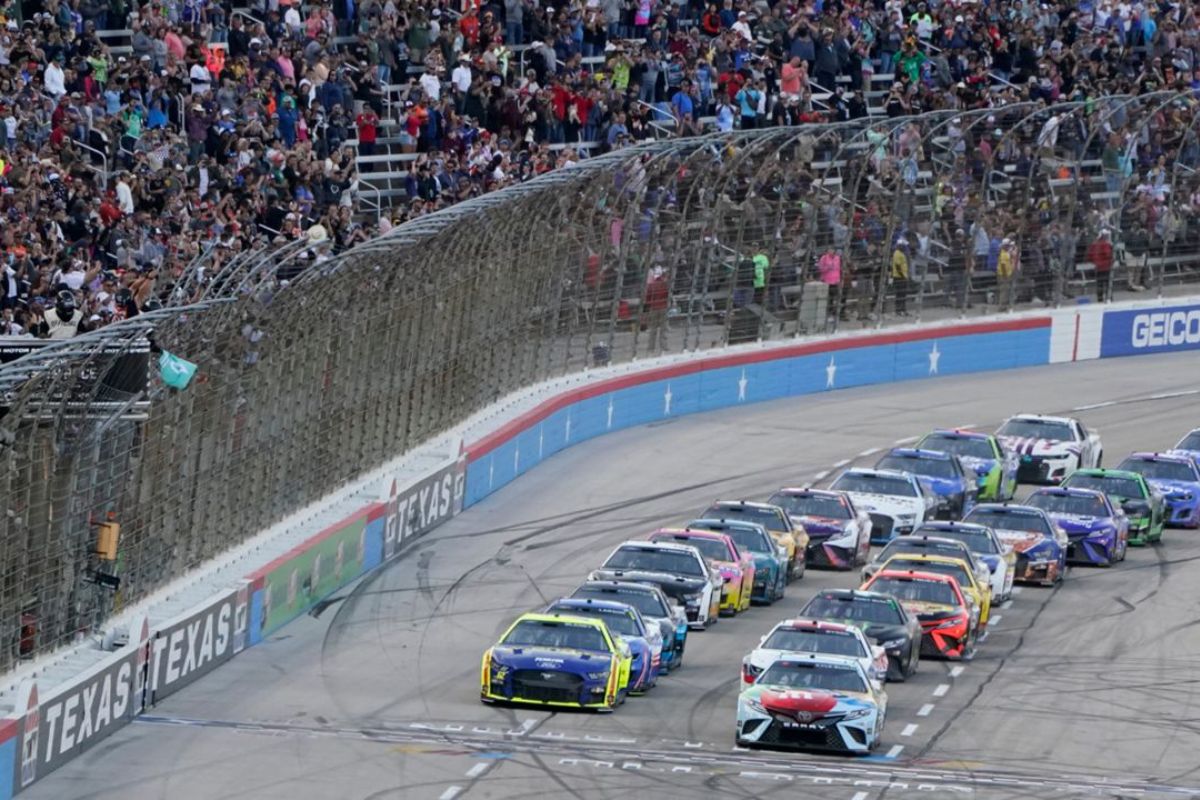Texas Motor Speedway Infamous PR Scandal: Texas Motor Speedway’s history is marked by its infamous PR scandal that stunned fans and drivers similarly. Early operational missteps highlighted the unpreparedness for safety issues, such as the notorious tire failure incident involving Jeff Gordon and a pit exit crash injuring crew members in 1999. How TMS navigated these challenges reveals a complex expedition of adaptation.
Key Highlights
- Jeff Gordon’s tire failure incident exposed significant safety lapses at Texas Motor Speedway, raising concerns among fans and drivers.
- A pit exit crash in 1999 injured crew members, highlighting management’s unpreparedness for handling safety issues.
- Water seepage in 1998 caused qualifying delays, frustrating drivers and fans and damaging TMS’s reputation.
- The cancellation of the 2001 CART race due to high speeds led to widespread fan disappointment and criticism.
- These incidents necessitated improved PR strategies and transparent communication to rebuild trust with fans and stakeholders.
The Early Ambition and Challenges of Texas Motor Speedway
In its nascent stages, Texas Motor Speedway was a bold endeavor, conceived with the ambition of becoming a premier destination in the world of NASCAR racing. However, the track’s early years were blemished by a series of controversies that threatened to overshadow its promising potential. The challenges faced by TMS were not merely operational but also existential, as it struggled to balance the demands of safety and the spectacle of high-speed racing.
The initial construction of TMS was fraught with issues that would later manifest in high-profile incidents, casting a long shadow over its reputation. The track, designed to push the limits of speed and excitement, quickly became notorious for its inability to guarantee the safety of drivers and spectators similarly. This period was characterized by a sequence of PR blunders that exposed the management’s unpreparedness in addressing safety concerns, which became alarmingly evident during some of its earliest races.
Critics of TMS argued that the track’s layout contributed to its problems, with banking and turns that were ideal in theory but perilous in practice. The high speeds achieved on the track often resulted in crashes, drawing the ire of drivers and fans who expected more from a venue of such ambition.
Despite these challenges, TMS’s management was resolute in addressing these issues, undertaking noteworthy modifications to improve safety and elevate race quality.
The Vision Behind Texas Motor Speedway’s Construction
While the early years of Texas Motor Speedway were blemished by challenges, the grand vision that initiated its construction was nothing short of ambitious. The story begins in the late 1960s with the opening of Texas World Speedway, a venue that promised to bring high-caliber racing to the Lone Star State. However, by the 1980s, the decline of this track left a void in a market enthusiastic for motorsport spectacle.
Enter Bruton Smith, the groundbreaking owner of Speedway Motorsports, and Eddie Gossage, a PR virtuoso from Charlotte Motor Speedway. Their collaboration aimed to craft a racing venue that would not only fill the gap but redefine it. With ground breaking on April 11, 1995, their $150 million venture promised a state-of-the-art facility, emphasizing dual banking turns—an ambitious engineering feat intended to accommodate diverse racing formats.
The vision included 150,000 seats and 76 luxury condos, reflecting a clear intent to blend sporting excellence with spectator comfort. Drawing inspiration from America’s iconic ovals, the design sought to create an unmatched racing experience. Yet, the groundbreaking dual banking concept met with skepticism, particularly from the Indy Racing League, whose officials expressed safety concerns.
Despite these challenges, Smith and Gossage were undeterred, pushing forward with resolve. Their foresight was evident in the track’s capacity to host diverse racing formats, although the initial execution faced unforeseen hurdles. This bold venture highlighted the ambition to not only provide a venue for racing but to create a landmark in American motorsport culture.
Texas Motor Speedway’s PR Nightmares and Safety Scandals
Despite its ambitious beginnings, Texas Motor Speedway soon found itself entangled in public relations nightmares and safety scandals that blemished its reputation. The track’s early controversies revealed considerable issues with operational safety and public perception. A series of incidents in the late 1990s and early 2000s emphasized the challenges the speedway faced, leading to a period of intense scrutiny and criticism.
- Water Seepage and Driver Discontent: In 1998, the speedway faced backlash as severe water seepage delayed qualifying rounds, validating driver criticisms about the track’s surface. Derrike Cope and Lake Speed’s spins highlighted the dangers posed by poor maintenance. Adding fuel to the fire, Eddie Gossage’s provocative “Shut Up and Drive” t-shirts reflected an antagonistic stance towards legitimate safety concerns.
- Catastrophic Accidents and Safety Oversights: The 1999 season was tainted by serious accidents, including rookie Nicholas Johnson’s pit exit crash that injured eight crew members. Jeff Gordon’s high-speed collision due to tire failure further illuminated the track’s perilous conditions. His admission of the potential fatality if circumstances were slightly different drove home the severity of safety lapses.
- CART Race Cancellation and Unprecedented Chaos: Perhaps the most notable PR disaster occurred in 2001 when CART canceled a race just hours before it was set to begin due to dangerously high speeds and driver disorientation. The decision left over 50,000 fans disappointed and underscored the inadequacies of the track for high-speed events, with drivers experiencing life-threatening G-forces.
Redemption and Resilience: Texas Motor Speedway’s Recovery
Amidst the turbulence of public relations debacles and safety scandals, Texas Motor Speedway initiated a course of redemption that exemplified both resilience and a commitment to change.
Faced with a potentially terminal decline in the early 2000s, Bruton Smith and Eddie Gossage commenced a tactical overhaul of the facility. Recognizing the pressing need for tangible improvements, they invested $2.4 million in 2001 to repave the track, addressing the long-standing grievances of drivers who had criticized its uneven surface.
This investment marked a crucial point. Gossage shifted from a defensive posture to a proactive advocate for safety and competitive integrity. The results were tangible and immediate. The NASCAR events in 2001 and 2002 experienced fewer on-track incidents, as drivers began to acknowledge the improvements made to the track’s surface. This shift not only restored confidence among the racing community but also revitalized the Speedway’s reputation.
The commitment to change was mirrored in the steadfast support of the fans. Attendance figures remained robust, with major events drawing crowds exceeding 200,000.
By 2005, Texas Motor Speedway had firmly entrenched itself as a cornerstone of the NASCAR calendar, hosting two Cup races annually alongside prestigious IndyCar and sports car events. The track’s resurgence was a reflection of the leadership’s resilience and ability to learn from past missteps, transforming a once beleaguered venue into a celebrated fixture in American motorsports.
TMS Today: Modern Criticism and Ongoing Challenges
Texas Motor Speedway (TMS) has navigated a complex expedition, evolving from a site of considerable safety concerns to a modern venue facing a new set of challenges. While past efforts under Gossage’s leadership earned acclaim for prioritizing fan experience and safety, contemporary issues pivot around the quality of racing itself.
The 2017 track reconfiguration, though intended to improve on-track excitement, inadvertently created a restrictive, one-groove layout that impedes passing, frustrating both drivers and fans similarly.
Modern criticism at TMS echoes a broader narrative within motorsport, where the quest for safety and thrill must coexist harmoniously. The following key points encapsulate the current challenges:
- Track Layout: The one-groove design has been criticized for stifling dynamic racing action, resulting in repetitive and predictable race outcomes that disengage the fanbase.
- Fan Discontent: Despite creative fan engagement strategies, the core product—the race—falls short, leading to a disconnect between fan expectations and on-track performance.
- Leadership and Progressiveness: TMS’s history suggests that bold leadership and adaptability are crucial. Revisiting past lessons could be critical in addressing and overcoming current hurdles.
Despite the setbacks, Texas Motor Speedway holds a blueprint for transformation. Its history as a venue that once overcame notable safety and PR challenges demonstrates the power of resilience and progressiveness.
As TMS faces modern criticisms, it stands at a crossroads, poised to redefine its legacy by integrating past lessons with future solutions to restore its standing in the NASCAR community.
News in Brief: Texas Motor Speedway’s Infamous PR Scandal
Texas Motor Speedway’s odyssey from ambitious inception to its infamous PR scandals and subsequent recovery offers a complex narrative of resilience and adaptability. While initial challenges and safety concerns tarnished its reputation, efforts to address these issues have facilitated a degree of redemption.
Nevertheless, the Speedway continues to face modern criticisms and challenges that necessitate ongoing attention. The Texas Motor Speedway saga highlights the intricate balance between innovation, safety, and public perception in the high-stakes world of motorsports.
ALSO READ: Texas Motor Speedway’s Track Troubles: Unraveling the Chaos



